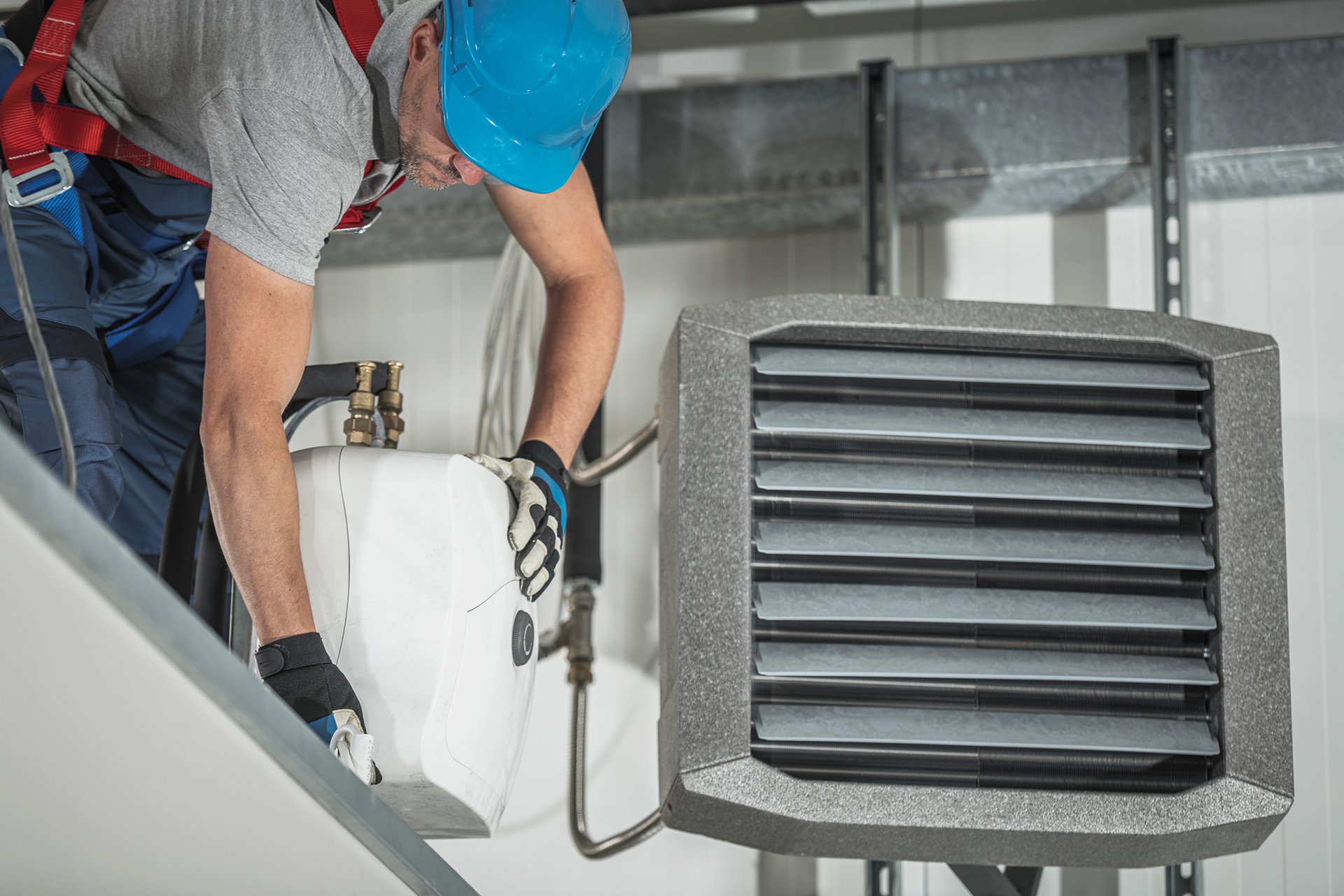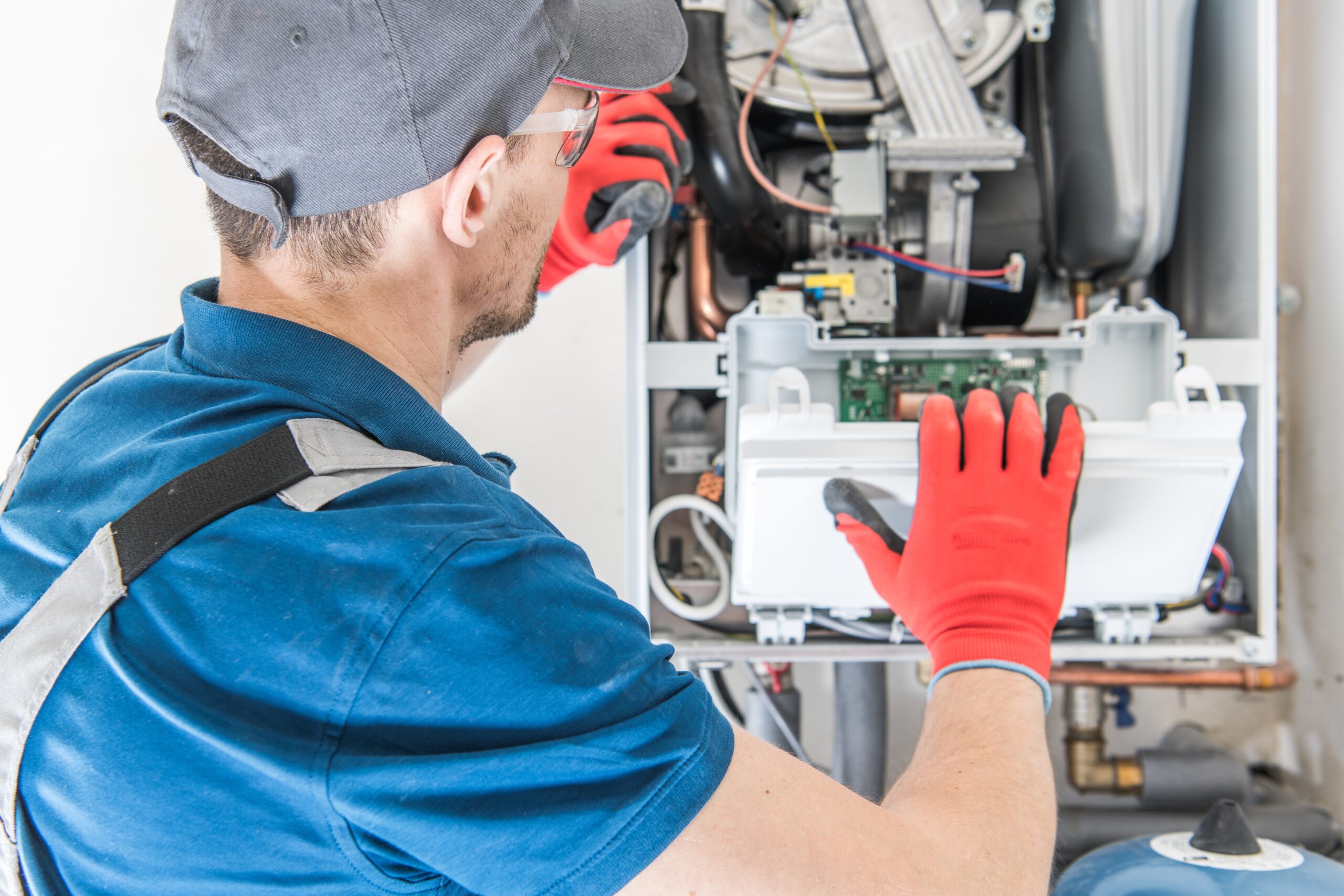How a Heat Pump and Furnace Work Together to Maximize Your Home's Heating Performance
Recognizing how a warmth pump and heater work together is important for house owners looking for reliable heating services. Each system has its toughness, providing a balanced approach to home comfort. The heatpump masters moderate temperature levels, while the heating system provides fast warmth during extreme cold. This harmony not only minimizes energy prices however likewise boosts the life expectancy of both devices. What elements affect this collaboration, and exactly how can homeowners optimize their benefits?
Understanding Heat Pumps: Just How They Function
Numerous people might be strange with their inner operations, heat pumps play a vital role in modern home heating systems. These tools run by transferring heat from one place to another, using the principles of thermodynamics. In colder months, a warm pump extracts warm from the outdoors air, ground, or water, and transfers it inside to warm up the space. On the other hand, during warmer months, it can turn around the procedure, serving as an air conditioning unit by getting rid of heat from inside to the outside.Heat pumps contain an evaporator, condenser, compressor, and expansion shutoff. The cooling agent within the system soaks up warmth as it vaporizes at reduced temperature levels and stress. The compressor then enhances the stress and temperature level of the refrigerant, allowing it to launch heat as it condenses. This efficient procedure can considerably decrease power consumption compared to standard home heating techniques, making heat pumps a sustainable selection for environment control in homes.
The Duty of Heaters in Home Home Heating
Furnaces play a necessary duty in home heating by providing a reputable resource of warmth throughout the colder months. They run by producing heat via combustion or electrical resistance, dispersing it throughout the home through ducts or glowing systems. The efficiency of a heater is often gauged by its Yearly Fuel Application Efficiency (AFUE) ranking, which shows how effectively the unit converts gas into heat.Furnaces can utilize various energy sources, consisting of gas, propane, electrical power, or oil, enabling home owners to choose one of the most appropriate choice for their demands. Unlike heatpump, which may have a hard time in severe cool, heaters preserve regular efficiency, ensuring that interior temperature levels remain comfy despite outdoor conditions. Additionally, modern heaters commonly come outfitted with innovative modern technology, such as variable-speed blowers and wise thermostats, boosting their performance and responsiveness. This convenience makes heaters an essential element in all-inclusive home heating methods.

Advantages of Using Both Equipments Together
Incorporating the staminas of both heating systems and heat pumps can lead to a much more efficient and effective home heating solution. Using both systems allows property owners to benefit from the heatpump's energy efficiency during milder temperature levels while depending on the heater for even more severe cold conditions. This dual strategy can substantially lower power prices, as heatpump eat much less power than typical home heating techniques when temperatures are moderate.Additionally, utilizing both systems with each other can enhance comfort levels in the home. Heat pumps can give constant, even heating, while heating systems can swiftly raise ambient temperature levels when needed. Moreover, the assimilation of both systems can prolong the lifespan of tools by lowering deterioration on each unit, as they share the workload. Eventually, property owners can appreciate a balanced, economical heating solution that readjusts perfectly to varying climate condition, making certain a warm and inviting home throughout the wintertime months.
How Warmth Pumps and Furnaces Enhance Each Various Other
When property owners incorporate heatpump and furnaces, they create a complementary heating system that takes full advantage of efficiency and comfort. Heatpump operate by moving warmth from the outdoors air or ground, making them extremely effective in modest environments. They succeed during milder temperature levels, giving cost-effective home heating. Conversely, heating systems produce heat through burning or electrical resistance, delivering strong, instant heat during extreme cold conditions.The combination of these two systems enables for vibrant adjustments based on temperature level changes. During warmer months or milder winter season days, the warm pump can take the lead, saving power and decreasing expenses. As temperature levels decline, the heating system can seamlessly engage, making certain consistent heat throughout the home. This harmony not just enhances power use but also improves the life-span of both systems, as each unit runs within its perfect efficiency range. Together, they create a balanced atmosphere that adjusts to varying environment demands.
Enhancing Efficiency: Tips for Homeowners
House owners can boost their home heating effectiveness via a number of practical techniques. Establishing a regular maintenance routine, incorporating smart thermostat innovation, and carrying out efficient insulation and securing services are vital actions. These actions not only enhance comfort however likewise decrease energy expenses.
Routine Maintenance Set Up
To assure maximum heating effectiveness, establishing a routine upkeep schedule is essential for any kind of home. Home owners must prioritize routine examinations of both heatpump and heaters to establish peak performance. This consists of changing air filters each to 3 months, as clogged filters can significantly lower efficiency. Additionally, scheduling specialist upkeep at the very least as soon as a year permits professionals to determine and address potential issues prior to they escalate. Home owners need to also clean the warm pump's outdoor unit to avoid debris buildup that can prevent air movement. By adhering to a regular maintenance schedule, property owners not just enhance their furnace' effectiveness however also extend their lifespan, causing better comfort and decreased energy costs throughout the chillier months.
Smart Thermostat Integration
Integrating a smart thermostat into a home heater can substantially improve power efficiency, especially as it allows for exact control over temperature setups. These devices can find out the house owner's timetable and preferences, instantly changing the temperature level to enhance convenience while reducing energy usage. For example, they can decrease home heating during times when the home is unoccupied, reducing unneeded usage. Many wise thermostats also give real-time energy usage data, making it possible for home owners to see make informed choices concerning their heating practices. In addition, remote gain access to through smartphone apps allows users to adjust settings from anywhere, making sure the home is cozy upon return. Generally, clever thermostat assimilation not only enhances comfort yet considerably adds to energy financial savings and effectiveness.
Insulation and Securing Solutions
Smart thermostats play an important role in energy effectiveness, however their effectiveness can be considerably improved by correct insulation and sealing remedies. Home owners ought to prioritize shielding floorings, attic rooms, and walls to decrease heat loss. High-quality insulation materials, such as spray foam or fiberglass, can considerably boost thermal resistance. Furthermore, securing voids around air ducts, windows, and doors avoids cold air infiltration and warmth getaway. Weatherstripping and caulking work methods for dealing with these leaks - heat pump replacement ooltewah tn. Regular assessments for air leakages, together with making use of blower door tests, can assist recognize issue locations. By buying insulation official site and sealing, home owners can maximize the performance of their furnace, eventually leading to decreased energy intake and reduced utility bills
Typical Misconceptions Regarding Heat Pumps and Furnaces
What false impressions surround heatpump and heating systems? Lots of individuals incorrectly believe that heatpump are ineffective in chillier environments. Actually, modern warm pumps are developed to run effectively even in reduced temperatures, offering trustworthy heating throughout winter season. One more common misconception is that heating systems are always a lot more reliable than warmth pumps. This depends on the particular power resources and performance rankings of the systems in concern. Some might also assume that utilizing both systems simultaneously is unneeded, but as a matter of fact, this combination can optimize home heating performance, particularly throughout severe weather. In addition, individuals commonly presume that heat pumps require consistent maintenance, when in fact, they have similar upkeep needs to conventional furnace. By exposing these myths, homeowners can make even more enlightened decisions concerning their home heating alternatives, inevitably resulting in boosted convenience and energy efficiency in their homes.
Maintenance Factors To Consider for Combined Solutions

Often Asked Concerns
Can Warmth Pumps Job Properly in Incredibly Cold Climates?
Heatpump can struggle in incredibly cold environments due to decreased efficiency and warmth extraction restrictions. Nonetheless, innovations in technology have brought about designs designed for far better efficiency in such problems, enhancing their feasibility in rough environments.
How Much Time Do Warmth Pumps and Furnaces Commonly Last?
Warmth pumps commonly last 15 to twenty years, while furnaces have a lifespan of 15 to thirty years. Normal upkeep can extend their longevity, making certain reliable operation and decreasing the requirement for premature substitutes.

What Is the Ordinary Cost of Setting Up Both Equipments?
The ordinary cost of installing both a heatpump and a heater typically ranges in between $5,000 to $10,000 - heat pump installation ooltewah tn. Factors influencing this price consist of system dimension, installment complexity, and regional labor prices
Exist Tax Rewards for Using Energy-Efficient Home Heating Solutions?
Lots of home owners inquire concerning tax motivations for energy-efficient furnace. Different federal and state programs often supply credits or refunds, urging the adoption of sustainable technologies to decrease energy usage and advertise ecological duty.
Exactly how Do I Pick the Right Size Heatpump and Furnace?
Choosing the best dimension heat pump and furnace involves determining the home's square video footage, taking into consideration insulation quality, and evaluating local climate. Consulting a professional can guarantee click now optimal system performance and energy efficiency based on particular demands. heat pump installation ooltewah tn. Understanding just how a warmth pump and furnace work together is important for house owners looking for effective heating services. In cooler months, a warm pump removes warmth from the outside air, ground, or water, and transfers it indoors to warm up the living area. When homeowners incorporate warm pumps and heating systems, they create a corresponding home heating system that makes best use of effectiveness and convenience. Warmth pumps operate by transferring warmth from the outside air or ground, making them very reliable in moderate environments. Warm pumps can battle in extremely cool climates due to minimized performance and warmth extraction constraints